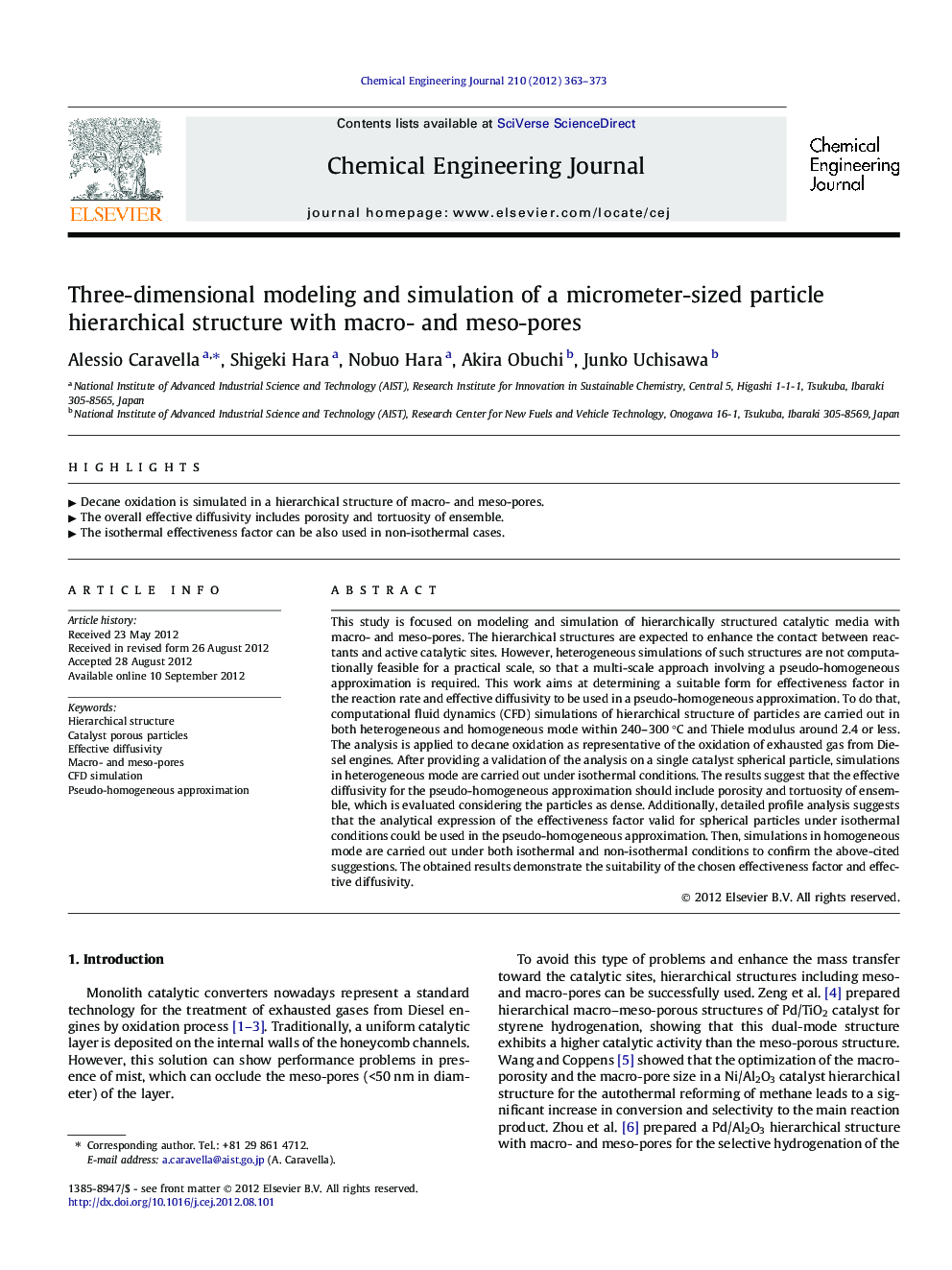| Article ID | Journal | Published Year | Pages | File Type |
|---|---|---|---|---|
| 149371 | Chemical Engineering Journal | 2012 | 11 Pages |
This study is focused on modeling and simulation of hierarchically structured catalytic media with macro- and meso-pores. The hierarchical structures are expected to enhance the contact between reactants and active catalytic sites. However, heterogeneous simulations of such structures are not computationally feasible for a practical scale, so that a multi-scale approach involving a pseudo-homogeneous approximation is required. This work aims at determining a suitable form for effectiveness factor in the reaction rate and effective diffusivity to be used in a pseudo-homogeneous approximation. To do that, computational fluid dynamics (CFD) simulations of hierarchical structure of particles are carried out in both heterogeneous and homogeneous mode within 240–300 °C and Thiele modulus around 2.4 or less. The analysis is applied to decane oxidation as representative of the oxidation of exhausted gas from Diesel engines. After providing a validation of the analysis on a single catalyst spherical particle, simulations in heterogeneous mode are carried out under isothermal conditions. The results suggest that the effective diffusivity for the pseudo-homogeneous approximation should include porosity and tortuosity of ensemble, which is evaluated considering the particles as dense. Additionally, detailed profile analysis suggests that the analytical expression of the effectiveness factor valid for spherical particles under isothermal conditions could be used in the pseudo-homogeneous approximation. Then, simulations in homogeneous mode are carried out under both isothermal and non-isothermal conditions to confirm the above-cited suggestions. The obtained results demonstrate the suitability of the chosen effectiveness factor and effective diffusivity.
► Decane oxidation is simulated in a hierarchical structure of macro- and meso-pores. ► The overall effective diffusivity includes porosity and tortuosity of ensemble. ► The isothermal effectiveness factor can be also used in non-isothermal cases.
